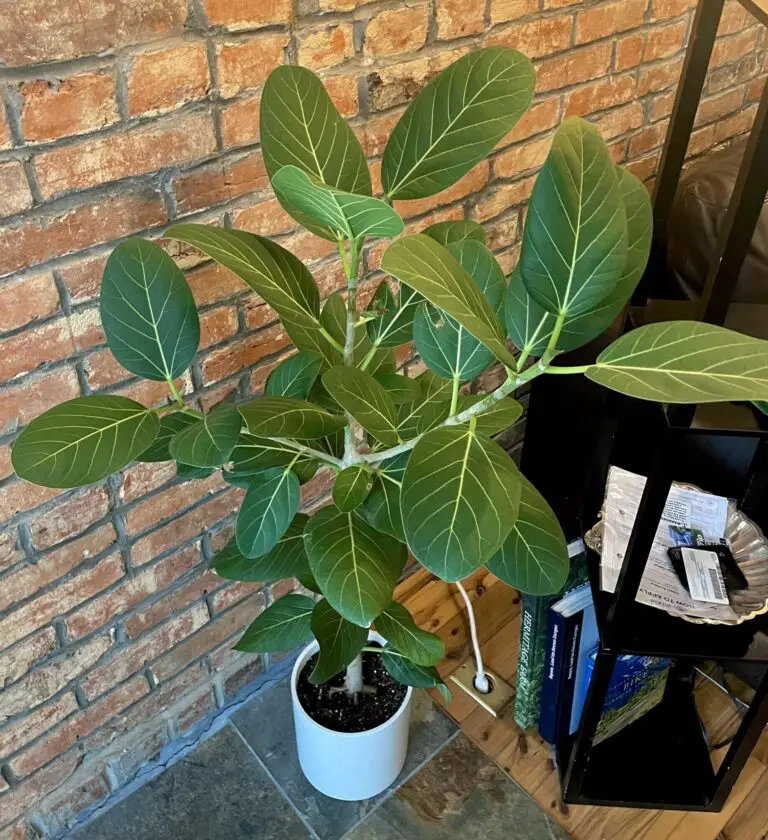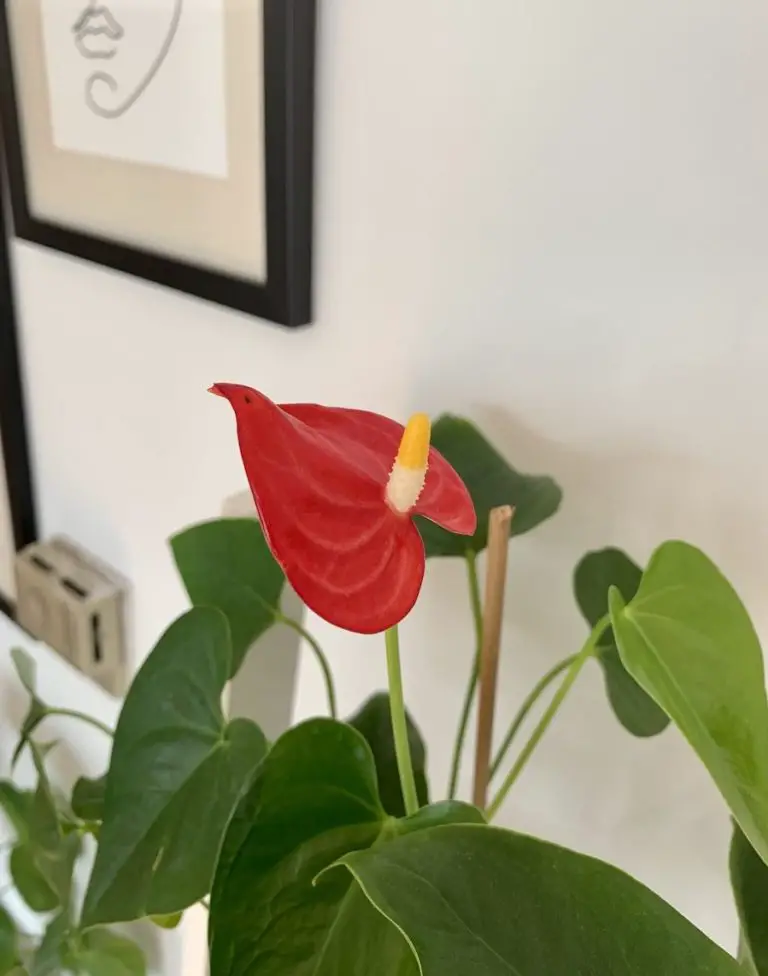Oxalis triangularis, also known as Purple Shamrock is a household favorite due to its stunning purple butterfly-like foliage. In addition, it is a fun plant to watch as it folds and unfolds its leaves following the sun, you will never get bored of watching your Purple Shamrock grow and move throughout the day and night. On top of its fun nature, Oxalis triangularis is easy to grow given the right environmental conditions.
To Successfully Grow Oxalis Triangularis From Bulbs: Provide a well-draining soil containing plenty of nutrients, plant your bulbs about one inch beneath the top layer of soil, and water your bulbs whenever the top inch of soil becomes dry. Place your Oxalis in a spot that receives lots of bright indirect light and make sure the temperature stays within a range of 55 F – 75 F. Within a few short weeks, you will be rewarded with a thriving, beautiful plant.
Below you will find a detailed guide to growing your Purple Shamrock from bulbs, and how to keep a thriving plant once the bulbs have sprouted.
How To Plant Oxalis Triangularis Bulbs
Below you will find a detailed guide to growing your Purple Shamrock from bulbs, and how to keep a thriving plant once the bulbs have sprouted.
Before you start you will need a few things:
- Well draining, lightweight soil
- Growing container with bottom draining holes (I’ve found terra cotta to work best)
- Oxalis Triangularis bulbs (Of course!)
How to pot up your bulbs:
- Once you choose a fitting container with drainage holes, fill it about three-quarters of the way with your soil mix.
- Lay the Oxalis bulbs on top of the soil giving each plenty of room as they branch out and grow larger during the season
- Cover the bulbs with about an inch or more of soil mix so that they are fully covered.
- Water your freshly planted bulbs until the soil is completely moist and you see some water running out from your plant pot, remove any excess water from the drainage tray or cover pot.
- Place your Purple Shamrock in a bright spot near a window that has a temperature above 55 F.
- Make sure to check your pots’ soil, don’t let the soil dry out completely. It’s important to keep the soil moist while the bulbs are sprouting
- After about 1-3 weeks you should see the first purple foliage sprouting from the soil. Well Done!
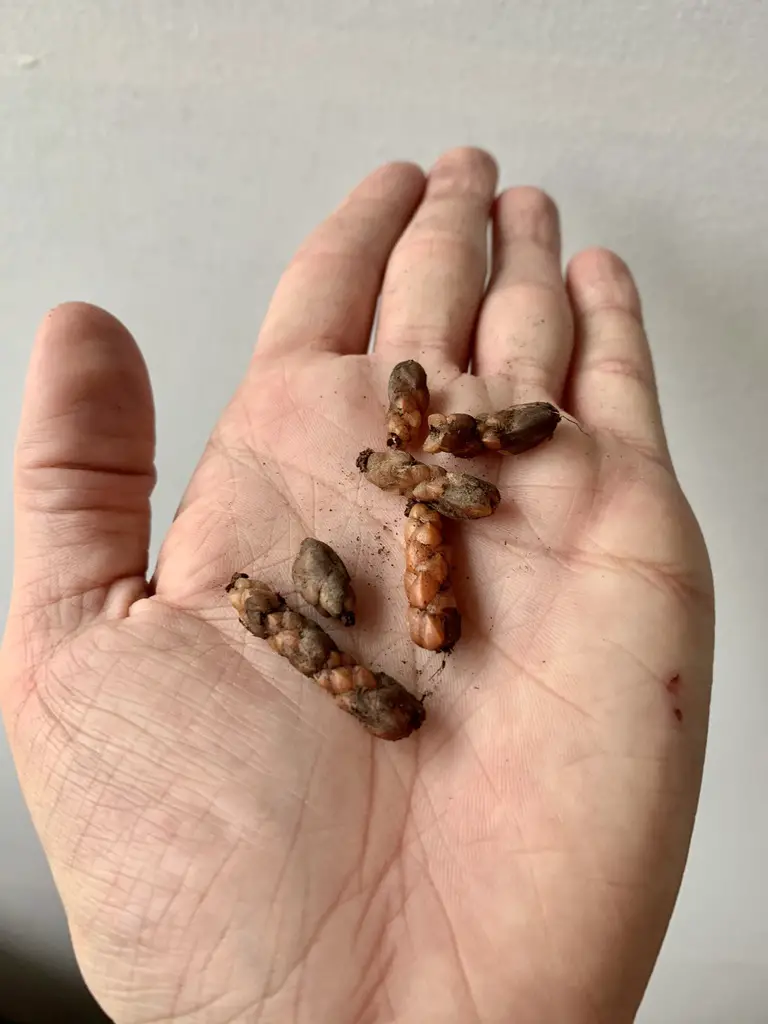
Oxalis Triangularis Bulbs 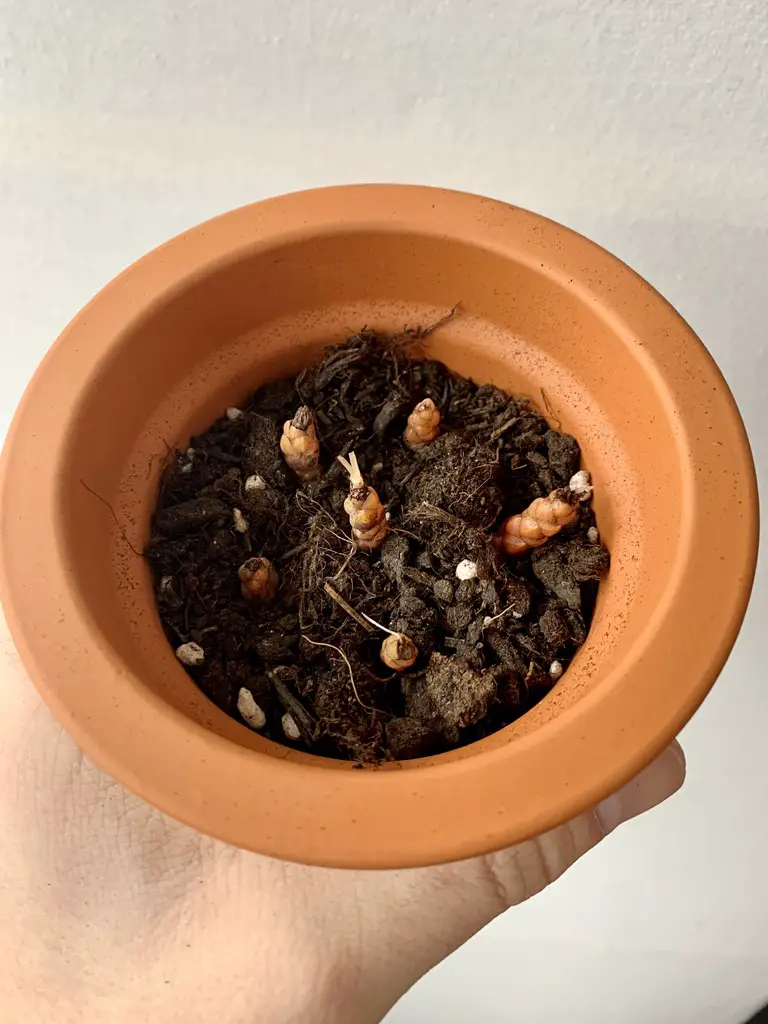
Place Bulbs Into Soil 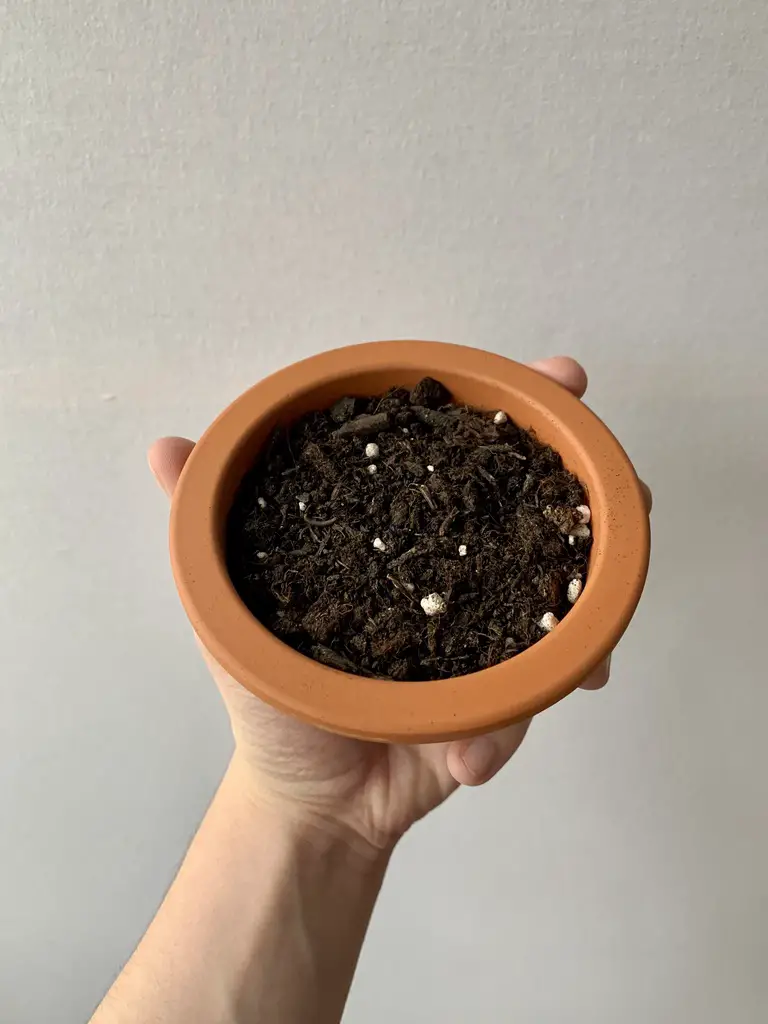
Cover Bulbs Completely
More About & How To Care For Purple Shamrock
Of course, once your Oxalis bulbs have sprouted you will want to continue to provide the correct care for a thriving and robust plant. Given the right conditions, Oxalis triangularis will continue to fill out with new foliage and eventually bloom about 8-12 weeks into its growing season. The plant produces dainty pink-colored flowers that are on separate stalks from the purple foliage. Once your Purple Shamrock begins sprouting flower stalks it will continue to bloom for several weeks.
Once Oxalis Triangularis is fully grown they will reach a height of around 12 inches, their width will continue to increase as the plant becomes more full and produces more foliage.
Another interesting characteristic of the Purple Shamrock is the movement of its foliage. During the night when there is no sun, the leaves fold together, similar to butterflies’ wings. This is a response to higher / lower light levels so the plant can maximize its light intake during the day. At night folding its leaves helps to lessen the moisture lost through its foliage.
Light Requirements For Oxalis Triangularis
Purple Shamrock prefers a bright spot near a window, the plant can even take some direct sunlight but should have some shade during the hottest part of the day when the sun is at its strongest.
Your plant will give you signs such as smaller leaves, leggy growth, and less vibrant colors if they are not receiving enough light. If you notice any of these symptoms try moving your Oxalis to a brighter location.
If you plan to move your Purple Shamrock outdoors during warmer months, make sure to slowly acclimate it to the harsher sun outdoors, moving it out of the shade slowly to avoid any sunburn to the foliage.
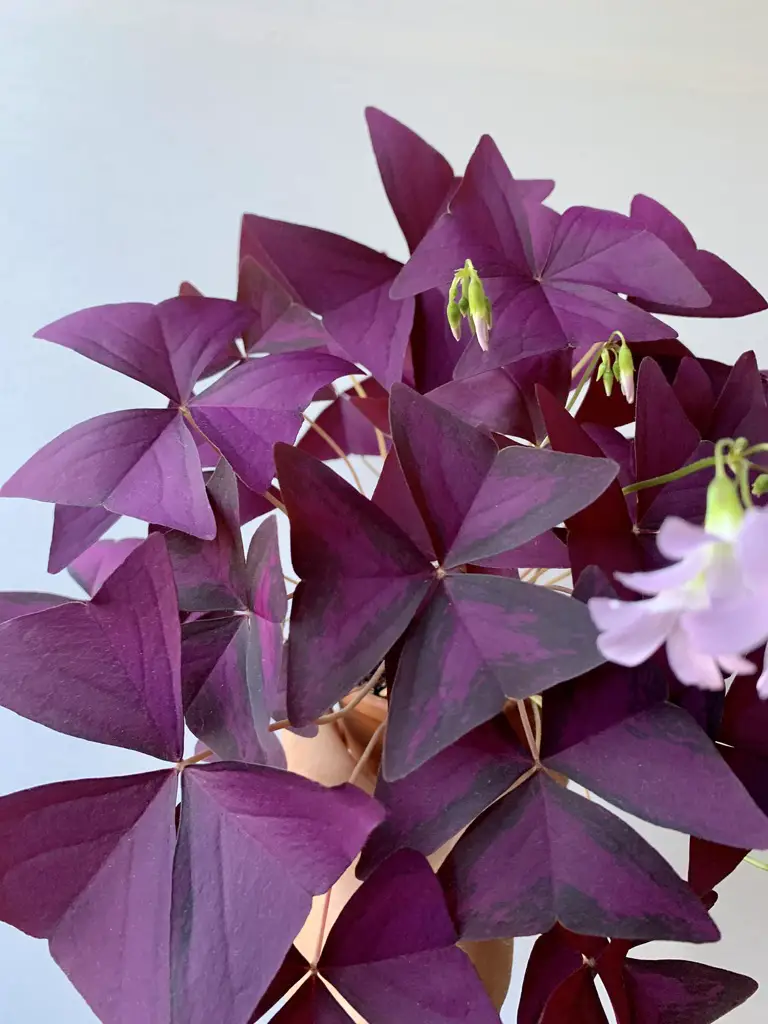
When To Water Oxalis Triangularis
It is best to keep Purple Shamrock consistently moist during its growing season. Allowing about the top inch of soil to dry completely between waterings.
Due to their dainty nature, these plants communicate quite well when they require water, you will notice slouching stems and somewhat limp leaves. This combined with dry soil is a clear indicator that it is time for more water.
Once your plant enters its dormancy period (foliage begins to die back and no new growth will emerge for a few months) it is best to water sparingly. Once every 3 weeks to once per month is enough to keep the bulbs happy during their dormancy. Overwatering during this period can quickly lead to root rot so water with caution. It is better to err on the side of underwatering while the plant is dormant.
Purple Shamrock Humidity Requirements
Luckily, Oxalis triangularis is not particularly picky when it comes to humidity levels. Average indoor humidity should do just fine.
If you notice browning leaf tips or crispy edges, you can try a pebble tray with some water under your plant. Alternatively, you can group plants together to increase the relative humidity in their microclimate.
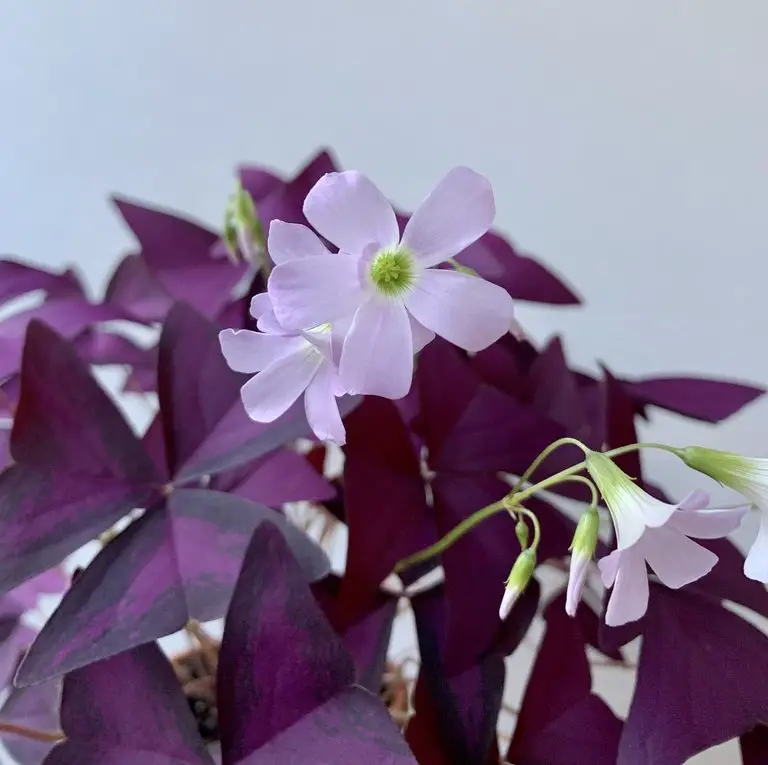
Temperature Requirements For Oxalis Triangularis
Average indoor temperatures will suit the Purple Shamrock perfectly. If you live in a place where the climate allows you can bring your plant outdoors as long as temperatures remain between 55 and 80 degrees Fahrenheit.
If your plant is near a hot window you may notice some wilting of the foliage, its best to bring your Oxalis back from the hot window or add a fan or similar to regulate the temperature around your plant.
Oxalis Triangularis Toxicity
According to the ASPCA, Purple Shamrock is mildly toxic to both cats and dogs. If you suspect your pet has consumed any part of the plant it is best to contact your local veterinarian. Symptoms of Oxalis poisoning are: diarrhea, drooling and vomiting.
For humans the foliage of the plant can be eaten, it is often used for decorative purposes on salads and similar. The leaves have a slightly acidic taste that pairs well with many types of salads.
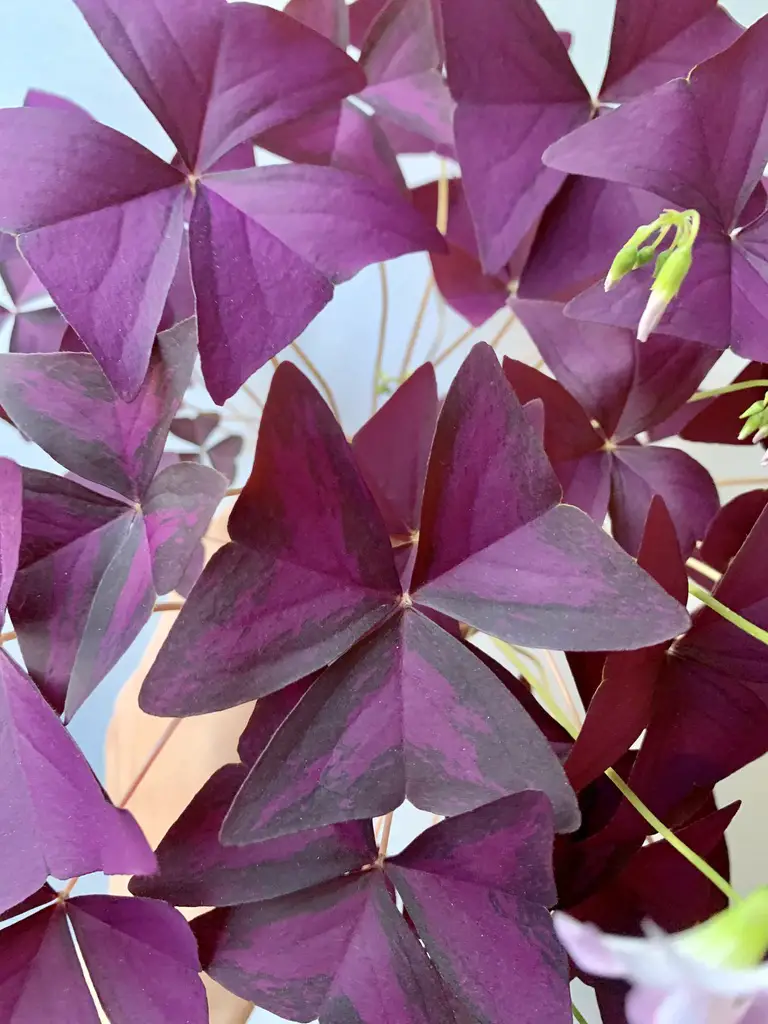
How To Propagate Oxalis Triangularis
Oxalis can be propagated by separating offshoot bulbs from the main rhizomes. It is best to do this once your plant is fully dormant and does not have any active growth or foliage.
To propagate: simply remove the bulbs from the soil and assess whether the offshoots on your existing bulbs are sizable enough to become their own plant.
If you have large enough offshoots you can pull apart the offshoots from the mother rhizome, allow them to callous over for a few days, and then you can plant them as you would a regular Oxalis Triangularis bulbs.

